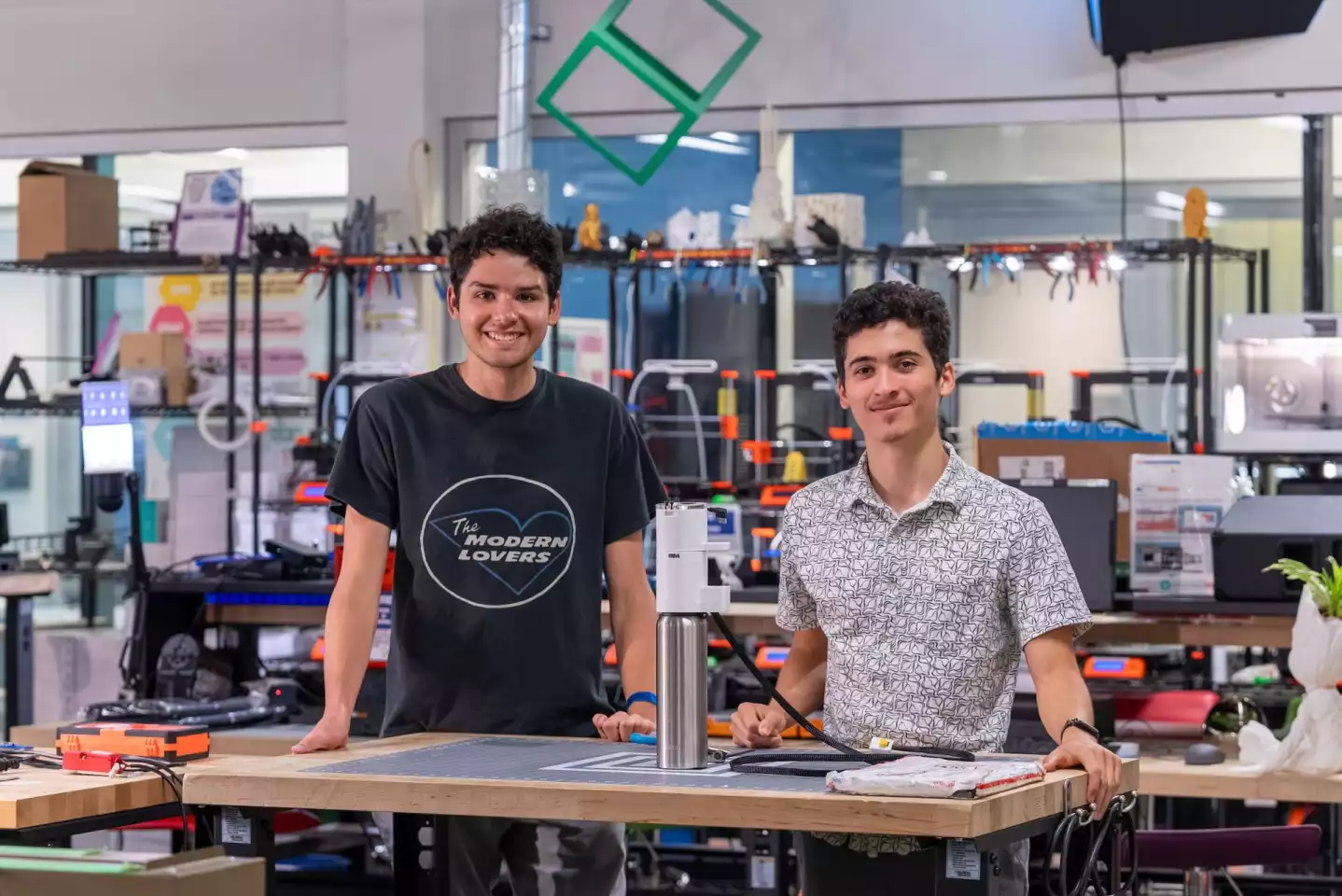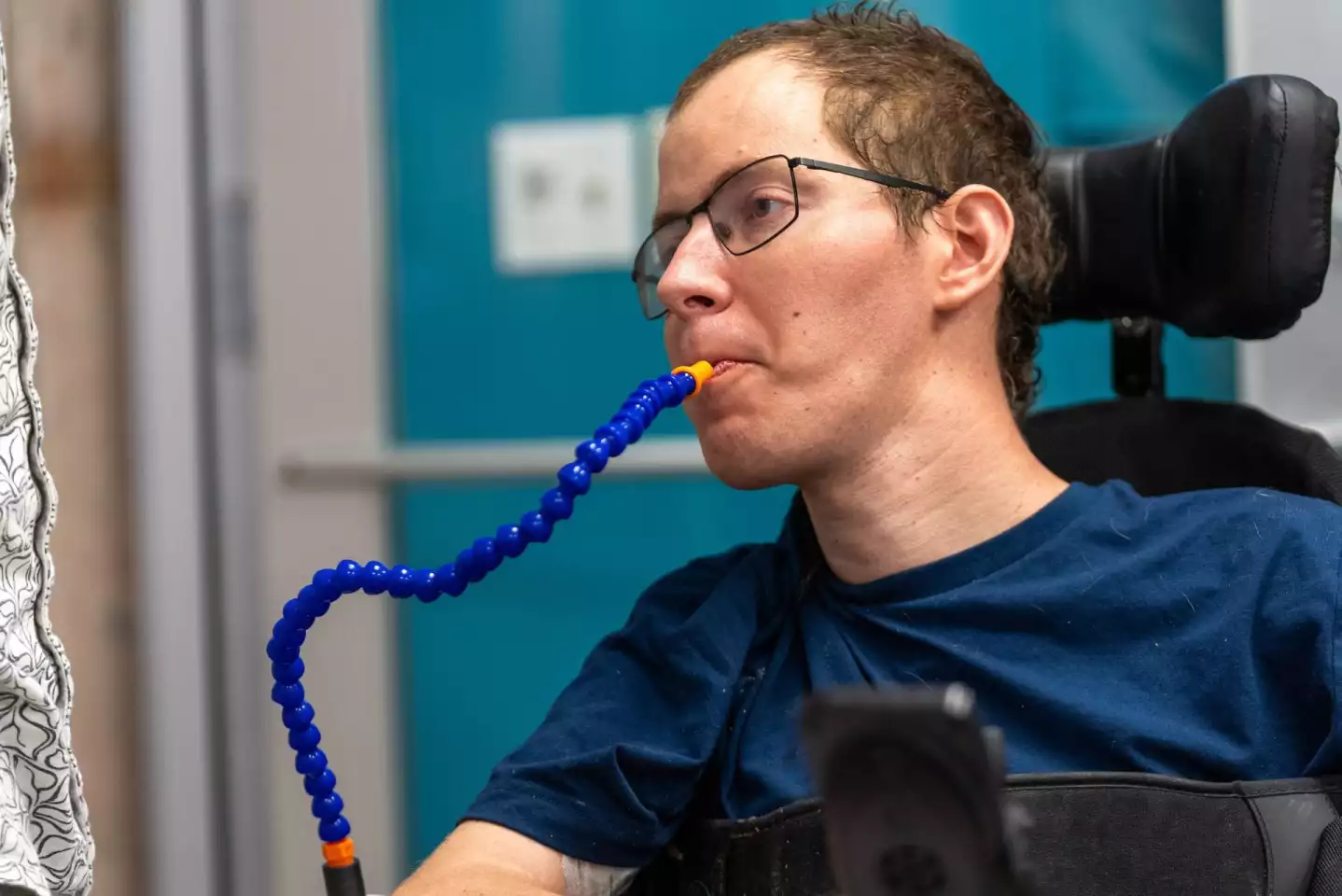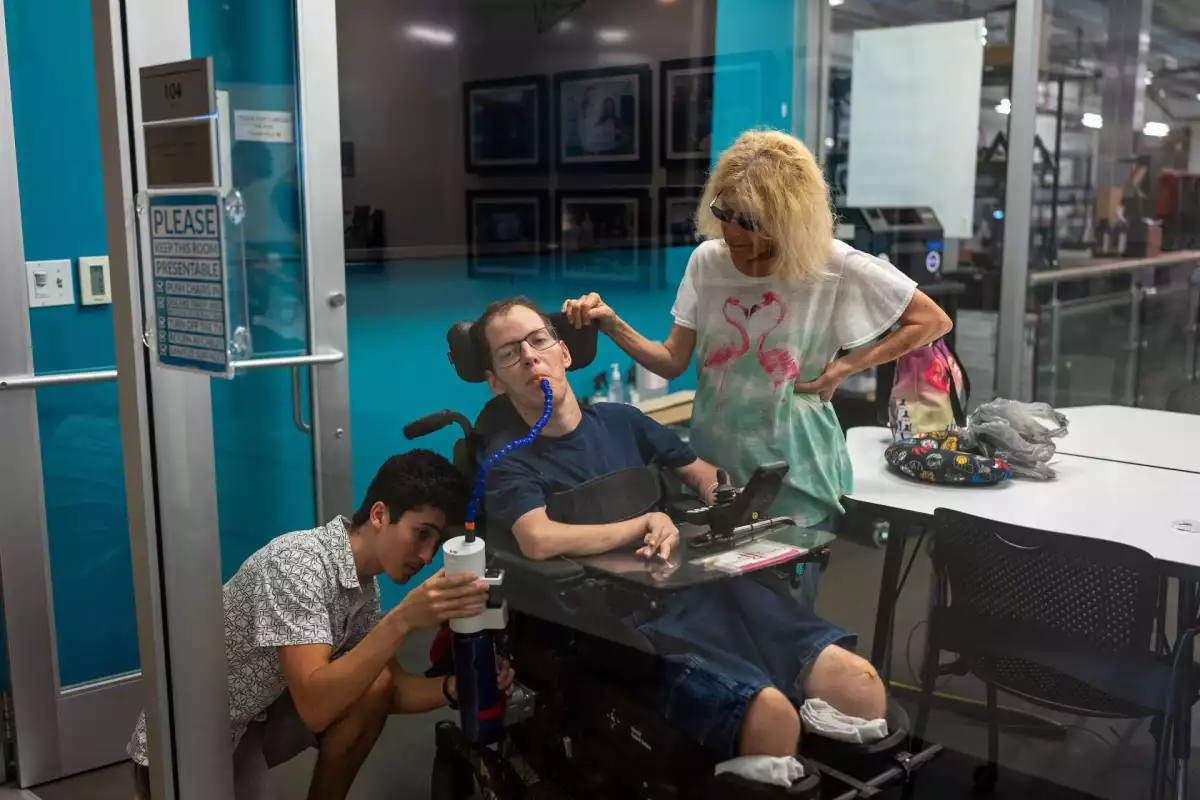For people such as Gary Lynn, cerebral palsy makes it nearly impossible to perform tasks like getting a sip of water without human assistance. He can now get those sips on his own, however, thanks to a student-designed device known as the RoboCup.
A Houston-based advocate for people living with disabilities, Lynn approached the team at Rice University's Oshman Engineering Design Kitchen about creating an assistive-drinking device. Undergraduate engineering students Thomas Kutcher and Rafe Neathery responded by building the RoboCup.
Although some of their initial prototypes were rather complex, they simplified the design to the point that the device can reportedly now be easily made from inexpensive 3D-printed and off-the-shelf components. The plans are freely available from the Design Kitchen's website.

Mounted on one side of the user's wheelchair, the RoboCup is connected to a water bottle or Thermos on the bottom, and a silicone tube (routed through an adjustable-angle articulated arm) on top. A hollow shaft within the device runs from the tube/straw down to the bottle, allowing users to suck water from the latter.
While not in use, the RoboCup stays back and out of the way. When it's time to drink, the user either passes a hand over a hard-wired infrared proximity sensor or presses a button. Doing so activates a battery-powered servo in the RoboCup, which swings the device around so that the mouthpiece of the straw is within easy reach of the user's mouth.

Once the user has finished drinking, another sensor-pass or button-push causes the RoboCup to swing back out of the way. And although the current setup meets Lynn's needs, it could be adapted for people with less use of their arms.
"The sensor can be attached to a wheelchair via Velcro, so users have the freedom to apply it wherever is most comfortable," Neathery told us. "We haven’t had the opportunity to personally test triggering the RoboCup with a neck or leg movement yet, but it’s something we’re interested in and it should be doable by placing the sensor/button in the right spot."
The RoboCup is demonstrated in the following video.
Source: Rice University






